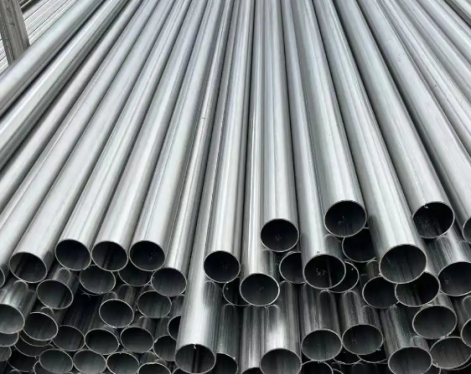Steel used in the manufacture of engineering structures that bear loads, also known as building structural steel. The performance requirements of this type of steel are mainly to have sufficient strength to ensure that permanent deformation and damage will not occur during use. In addition, this type of steel often requires cutting, bending, riveting and welding during use, so good formability and weldability are also required. The carbon content of this type of steel is generally less than 0.30%, and most of them are rolled into sections of a certain shape (such as angle steel, channel steel, I-beam, rebar, etc.), steel plates and steel pipes. They are often used in ships, vehicles, containers, etc. In engineering structures such as lifting and transportation machinery, it is used to manufacture bridges, steel columns, steel beams, trusses, etc. in construction projects.
Engineering steel can be divided into ordinary carbon steel and low-alloy high-strength steel.
1) Ordinary carbon steel This type of steel is supplied and used in a hot-rolled state due to its low carbon content and no other alloying elements. Its yield strength is low, about 200 ~ 300 MPa, and its low temperature toughness is also poor, but it has good manufacturability and low price. A3 steel is the most widely used in general engineering structures.
2) Low-alloy high-strength steel adds one or several alloying elements on the basis of ordinary carbon steel. The total amount of alloying elements is generally below 3%, and the yield strength can be increased to more than 300 MPa. The atmospheric corrosion resistance, wear resistance and low temperature toughness of this type of steel are significantly better than ordinary carbon steel, so it can reduce the weight of the steel structure, prolong the service life and save power consumption, and is widely used in ships, automobiles, construction machinery, etc. . The most commonly used steels are 16Mn, 15MnV, etc.
Some low-alloy steels with nickel, manganese and other elements added to improve low-temperature toughness are often used in engineering components in severe cold regions or low-temperature equipment in petrochemical industries, and are called low-temperature steels. Commonly used are 09Mn2V (-70°C), 3.5%Ni (-100°C) steel, etc. Some low-alloy steels with phosphorus, copper, chromium and other elements added to improve corrosion resistance are often used in railway vehicles, ships and open-air buildings, etc., and are called atmospheric corrosion-resistant steels. Most of the low-alloy high-strength steels are used in the hot-rolled state. After heat treatment, the strength and low-temperature toughness will be further improved, and the yield strength can be increased to 600~1000 MPa. It can be used in submarines, high-pressure vessels, etc. important structure.
Tips: seamless pipe means a steel pipe that is perforated from a whole round steel and has no welds on the surface. It is widely used in the manufacture of structural parts and mechanical parts, such as oil drill pipes, automobile transmission shafts, bicycle frames, and steel scaffolding used in construction. The use of steel pipes to manufacture annular parts can improve material utilization, simplify manufacturing processes, and save materials and processing. working hours.
Engineering steel can be divided into ordinary carbon steel and low-alloy high-strength steel.
1) Ordinary carbon steel This type of steel is supplied and used in a hot-rolled state due to its low carbon content and no other alloying elements. Its yield strength is low, about 200 ~ 300 MPa, and its low temperature toughness is also poor, but it has good manufacturability and low price. A3 steel is the most widely used in general engineering structures.
2) Low-alloy high-strength steel adds one or several alloying elements on the basis of ordinary carbon steel. The total amount of alloying elements is generally below 3%, and the yield strength can be increased to more than 300 MPa. The atmospheric corrosion resistance, wear resistance and low temperature toughness of this type of steel are significantly better than ordinary carbon steel, so it can reduce the weight of the steel structure, prolong the service life and save power consumption, and is widely used in ships, automobiles, construction machinery, etc. . The most commonly used steels are 16Mn, 15MnV, etc.
Some low-alloy steels with nickel, manganese and other elements added to improve low-temperature toughness are often used in engineering components in severe cold regions or low-temperature equipment in petrochemical industries, and are called low-temperature steels. Commonly used are 09Mn2V (-70°C), 3.5%Ni (-100°C) steel, etc. Some low-alloy steels with phosphorus, copper, chromium and other elements added to improve corrosion resistance are often used in railway vehicles, ships and open-air buildings, etc., and are called atmospheric corrosion-resistant steels. Most of the low-alloy high-strength steels are used in the hot-rolled state. After heat treatment, the strength and low-temperature toughness will be further improved, and the yield strength can be increased to 600~1000 MPa. It can be used in submarines, high-pressure vessels, etc. important structure.
Tips: seamless pipe means a steel pipe that is perforated from a whole round steel and has no welds on the surface. It is widely used in the manufacture of structural parts and mechanical parts, such as oil drill pipes, automobile transmission shafts, bicycle frames, and steel scaffolding used in construction. The use of steel pipes to manufacture annular parts can improve material utilization, simplify manufacturing processes, and save materials and processing. working hours.









